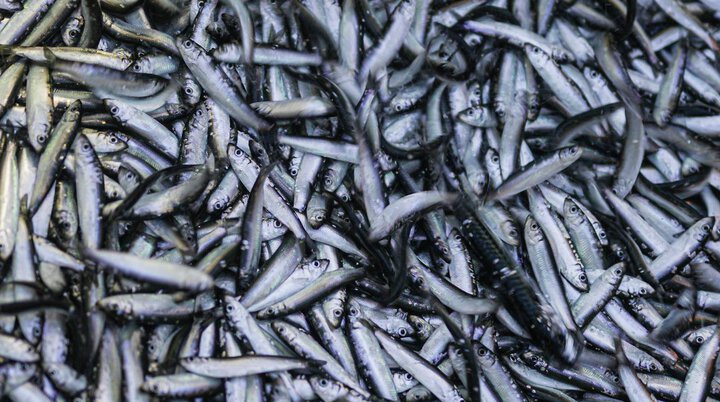Minimum prices
Ocean sprat
| Assortment | Details | Valid from | Price | Next week | Price unit |
|---|---|---|---|---|---|
| Mixed | Freezing, Round | 04.09.23 | 5.0000 | n/a | NOK/kg |
| Meal & Oil | 01.07.24 | 4.0960 | n/a | NOK/kg | |
| Meal & Oil | Cut | 01.07.24 | 3.4810 | n/a | NOK/kg |
Coastal sprat
| Assortment | Details | Valid from | Price | Next week | Price unit |
|---|---|---|---|---|---|
| Gr.1: 9,5-10 cm (bet.) | 25.09.23 | 9.0000 | n/a | NOK/kg | |
| Gr.2: 10-11,5 cm 2 lay | 25.09.23 | 9.0000 | n/a | NOK/kg | |
| Gr.3: 11,5-13,5 cm 1 lay | 25.09.23 | 9.0000 | n/a | NOK/kg | |
| Gr.4: >13,5 cm | 25.09.23 | 9.0000 | n/a | NOK/kg | |
| Meal & Oil | 01.07.24 | 4.0960 | n/a | NOK/kg | |
| Meal & Oil | Cut | 01.07.24 | 3.4810 | n/a | NOK/kg |
Quota overview
Catch map - Sprat
Sprat is a small herring fish measuring between 8 - 16 cm with shiny scales. Sprat is a pelagic shoaling fish with a wide distribution. It spawns between January and July, preferably in the period between May and June, at depths of 10 - 40 meters. In Norwegian areas, sprats spawn in the Oslofjord and along the eastern part of the Skagerrak coast. In some years, sprats have been observed spawning in the fjords between Lindesnes and Farsund, as well as in some fjords on the west coast.
Usage: Sprat can be used fresh, but a large portion of the catch is used in the canned food industry, where it is well known as sardine sprat and anchovy.
Sprat is also used for industrial purposes, such as in the meal and oil industries.
Fishing gear: Sprat is usually caught with purse seine or seine net.
Nutritional content: Sprat is also a good source of Omega 3 fatty acids and vitamin D. Using sprat as a topping can provide a highly valuable contribution to the diet.
Sprat
10 cm
Sprattus sprattus
January, May - December
19 cm




